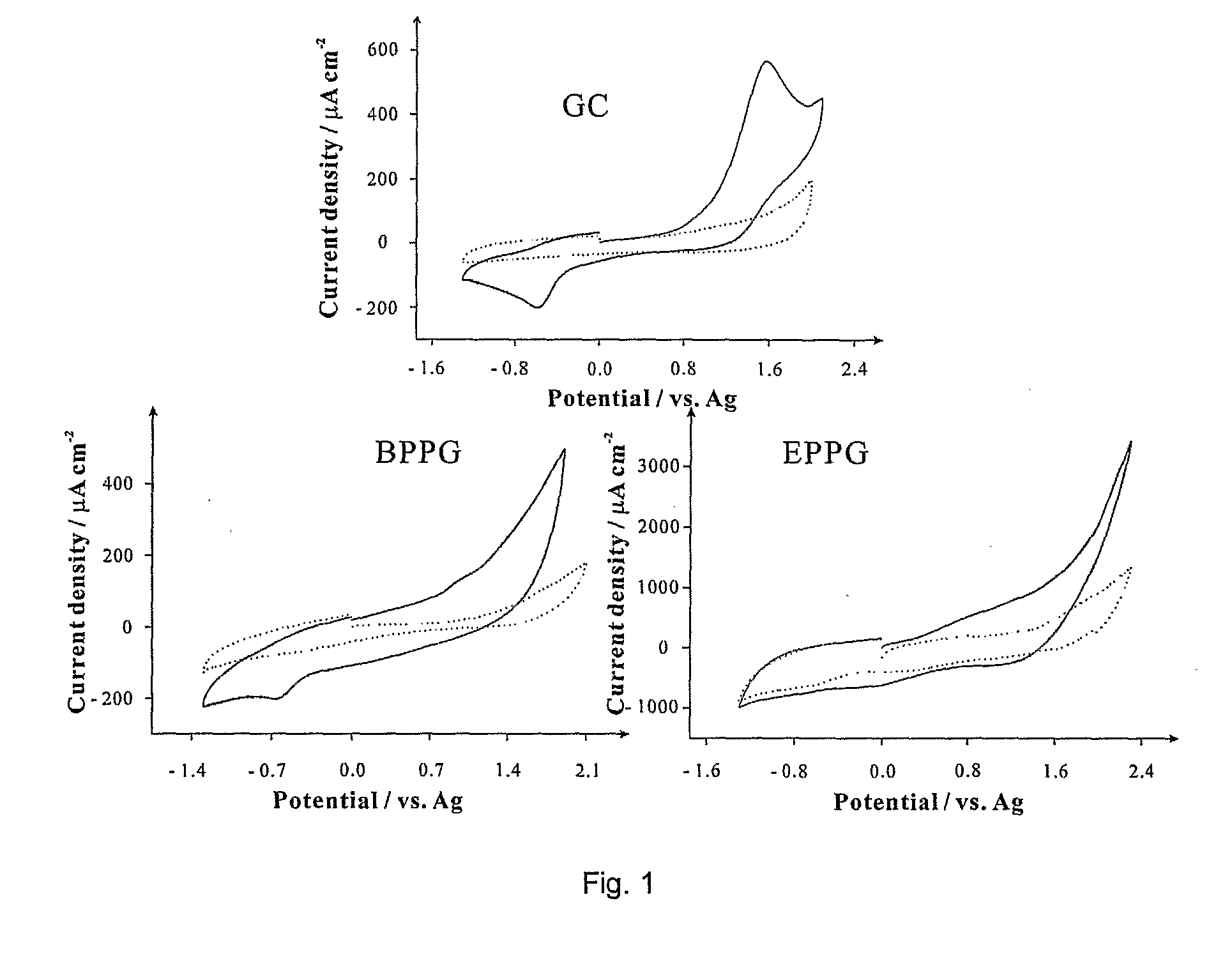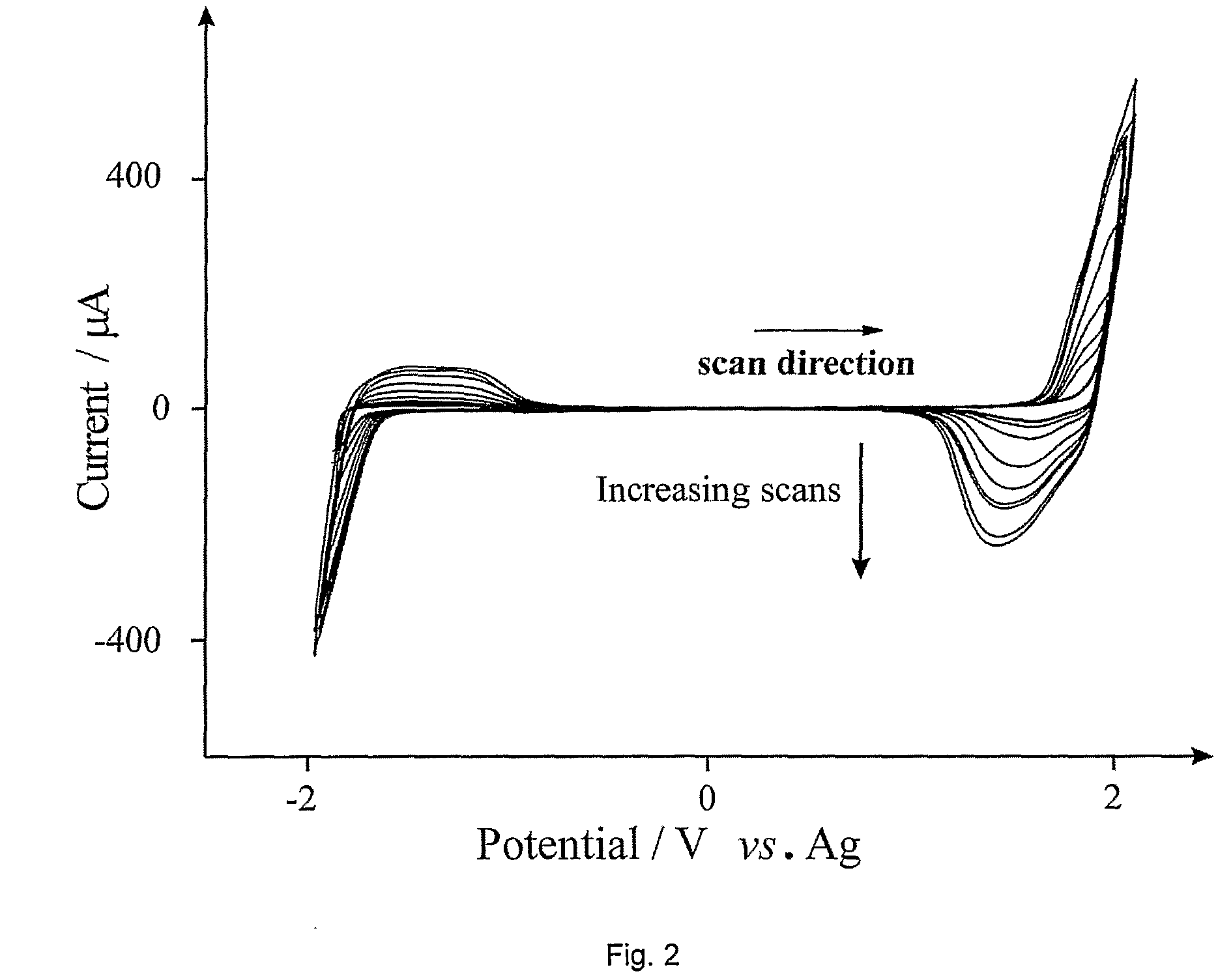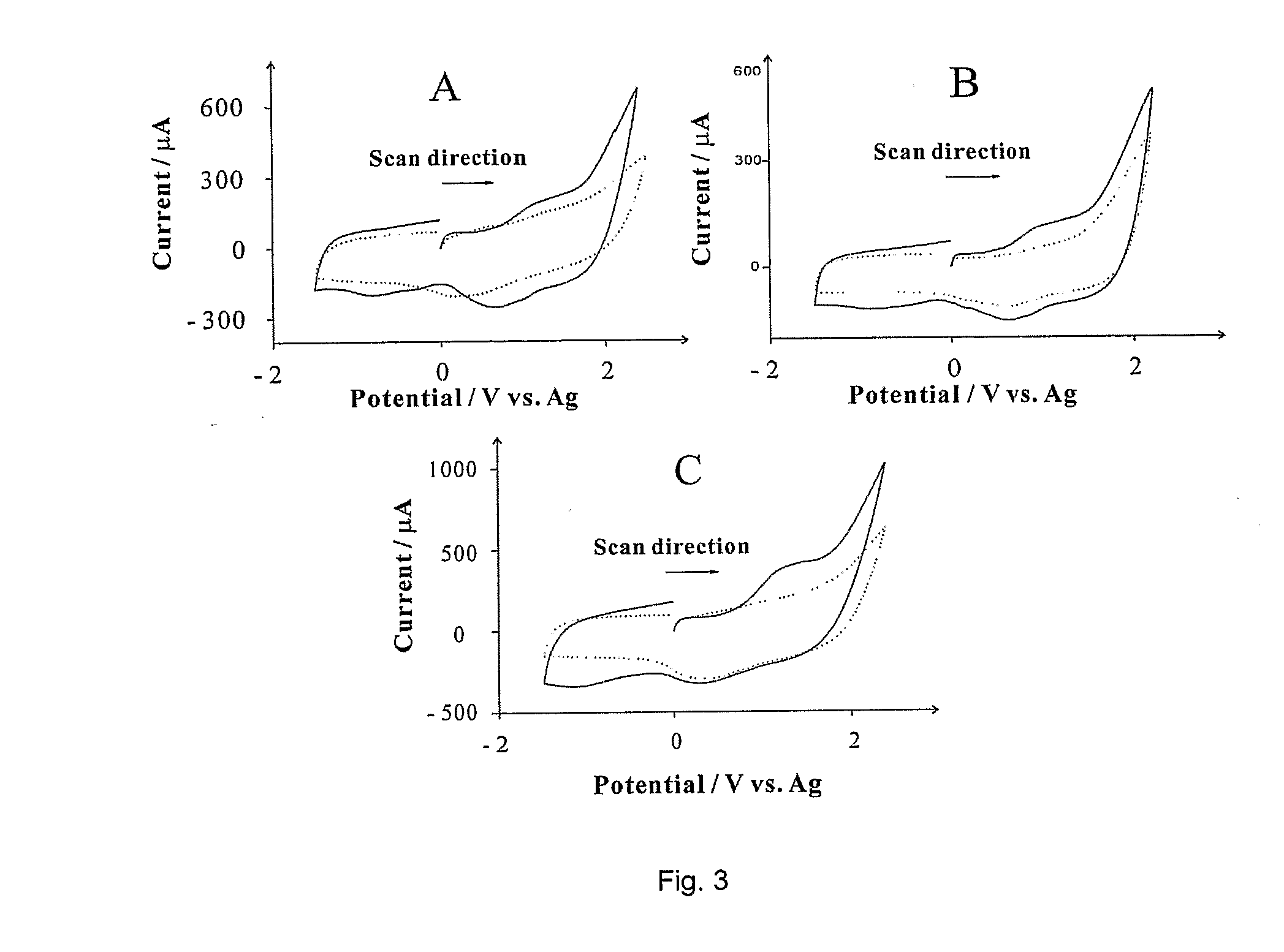Multi-walled carbon nanotube sensor comprising intercalating species and method of detection
- Summary
- Abstract
- Description
- Claims
- Application Information
AI Technical Summary
Benefits of technology
Problems solved by technology
Method used
Image
Examples
example
Electrochemical Detection of Ammonia
Materials and Methods
[0023]Propylene carbonate (Aldrich, 99.7%) and tetra-n-butylammonium perchlorate (TBAP, Fluka) were purchased at the highest grade available and used directly without further purification. Pure ammonia and nitrogen gas (BOC) were used for electrochemical experiments as described below. All the solutions were vigorously degassed with oxygen-free nitrogen until oxygen was no longer electrochemically detectable. All experiments were carried out at a temperature of 295±3 K.
[0024]Electrochemical experiments were performed using a μ-Autolab type II potentiostat (Eco-Chemie) controlled by General Purpose Electrochemical Systems v.4.7 software. For all electrochemical experiments carried out in the electrolyte, the working electrodes used were GC, BPPG (Le Carbone Ltd.), and EPPG (Le Carbone Ltd.). For BPPG and EPPG electrodes, discs of pyrolytic graphite were machined into a 4.9 mm diameter, with the disc face parallel with the edge ...
PUM
 Login to View More
Login to View More Abstract
Description
Claims
Application Information
 Login to View More
Login to View More - R&D
- Intellectual Property
- Life Sciences
- Materials
- Tech Scout
- Unparalleled Data Quality
- Higher Quality Content
- 60% Fewer Hallucinations
Browse by: Latest US Patents, China's latest patents, Technical Efficacy Thesaurus, Application Domain, Technology Topic, Popular Technical Reports.
© 2025 PatSnap. All rights reserved.Legal|Privacy policy|Modern Slavery Act Transparency Statement|Sitemap|About US| Contact US: help@patsnap.com



